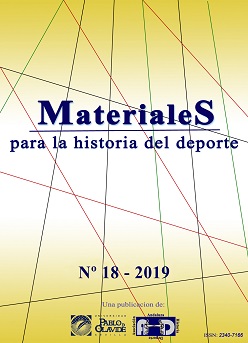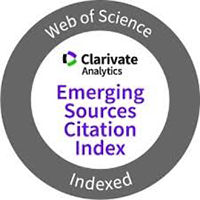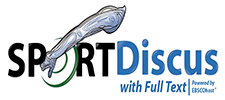“A strong body to ensure the spanish essence” The physical education of the Youth Front during the Franco regime (1940-1960)
Keywords:
Francoism, indoctrination, Front of youth, physical activity.Abstract
This paper aims to analyze that the scholar physical activity instructed some interpretations in reality, socially legitimized and committed to the hegemonic groups of the francoism. This study tries to understand how the series of mechanisms were started, around the youth, within the framework of school physical education, that looked for this aim. To do this, it will use analytical tools of the work of Michel Foucault, as well as the School Booklet of Education of 1945 as the main source of research.
Downloads
References
Cruz Orozco, José Ignacio. El yunque azul. Frente de Juventudes y sistema educativo. Razones de un fracaso. Madrid: Alianza, 2001.
Cuesta, Raimundo. “Las mil y una inquietudes de Foucault”. Con-ciencia social 17 (2013): 79-92.
Dussel, Inés. “Uniformes escolares y la disciplina de las apariencias: hacia una historia de la regulación de los cuerpos en los sistemas educativos modernos”. En Popkewitz, Thomas (coord.). Historia Cultural y Educación: ensayos críticos sobre conocimiento y escolarización. Madrid: Pomares, 2003.
Fontana, Josep. Enseñar Historia con una guerra de por medio. Barcelona: Crítica, 1999.
Foucault, Michel. Microfísica del poder. Madrid: Ediciones la Piqueta, 1979. -Obras esenciales. Madrid: Magnum, 2010.
Kincheloe, Joe. Teachers as researchers. Qualitative inquiry as a path to empowerment. London: Falmer Press, 1991.
Levoratti, Alejo. “Reseña”. Educación Física y Ciencia (La Plata) 12 (2010):115-119.
Mauri, Marta. “Frente de Juventudes y escuela: la construcción del imaginario social de la juventud durante el franquismo (1940-1960)”. Historia de la Educación 35 (2016): 321-334.
Michaud, Eric. “Soldados de una idea. Los jóvenes bajo el Tercer Reich”. En Levi, Giovanni y Schmitt, Jean-Claude. Historia de los jóvenes. La Edad Contemporánea. Madrid: Taurus, 1996.
Milstein, Diana y Mendes, Héctor. “Cuerpo y escuela. Dimensiones de la política”. Revista Iberoamericana de Educación 62 (2013):143-161.
Pastor Pradillo, José Luis. “Aproximación histórica a la Educación Física en España (1883-1990)”. Historia de la Educación 21 (2002): 199-214 - Educación y libros de texto en la enseñanza primaria (1983-1978). Madrid: Dykinson, 2005.
Planella, Jordi. Cuerpo, cultura y educación. Bilbao: Desclée de Brouwer, 2006.
Polo, Antonio. “El concepto de Heilpädagogik y su introducción al contexto español”. Historia Actual Online 12 (2007): 143-150.
Polo, Antonio: “El silencio de la pedagogía al comienzo del régimen de Franco” en Historia Actual Online 10 (2006), 87-97.
Scharagrodsky, Pablo, Manolakis, Laura y Barroso, Rosana. “La educación física argentina en los manuales y textos escolares (1880-1930). Sobre los ejercicios físicos o acerca de cómo configurar cuerpos útiles, productivos, obedientes, dóciles, sanos y racionales”. Revista brasileira de história da educação 5 (2003): 69-90.
Taborda, Marcus Aurelio y Fernández, Alexandre. “Educación Física, corporalidad, formación: notas teóricas”. Revista educación física y deporte 29 (2010): 227-234
Tirado, Jerónimo. “Higiene de la lectura y la escritura”. Semana Médica Española: Revista técnica y profesional de ciencias médicas 33 (1943):299-303.
Villanou, Conrad. “Imágenes del cuerpo humano”. Apunts 63 (2001): 94-104.
Downloads
Published
Issue
Section
License
Authors who submit to this journal agree to the following terms:
- Author(s) keep copyright and guarantee to the journal the right to be the first publication of the work as licensed under Creative Commons Attribution-Noncommercial-ShareAlike 4.0 International as initial publication in this journal.
- Author(s) can establish additional agreements for non-exclusive distribution of the version of the work published in the journal (for example, to an institutional archives or to publish it in a book), with an acknowledgment of its initial publication in this journal.
- It is allowed and authors are encouraged to disseminate their work electronically (e.g, in institutional open archives or on their own website) before and during the submission process, as it can lead to productive exchanges, as well as a citation earlier and more of published work (See the Effect of Open Access).












